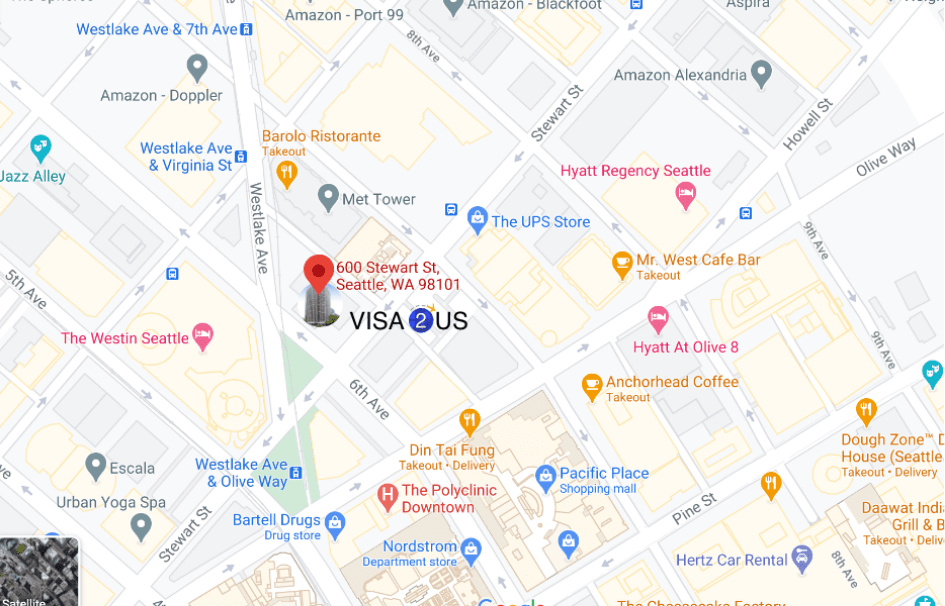H-1B Visa: Everything You Need to Know

Before We Get Started…
In this guide, we’ll walk you through the must-know aspects of an H-1B visa and what you can expect during the application process.
Start and End Dates
When applying for the H-1B visa, remember that there are key dates, processing times, and limitations involved.
Employment in H1B visa roles starts on October 1 of each year. This is the USCIS fiscal year, so all visas must be approved in time to begin working then.
You may not enter the United States until ten days before your employment is contracted to begin. The visa begins on the first day you enter the U.S. and lasts for an initial three years, for six years maximum. All H-1B visa roles end on September 30, the year the visa expires.
Processing Time for an H-1B Visa
The processing time for this visa is broken into stages. The overall process is done in steps. The window opens in April.
To work in October, begin applying as close to the window opening as possible. This is vital because there are only 65,000 visas available for regular cap approval and 20,000 for master’s cap.
Applicants are approved using a computer-generated random lottery selection process. When the number of applications exceeds the visa cap, the USCIS chooses the number of petitions allowed randomly.
Exemptions to the Cap
There are certain exemptions to the limited visas. Should you be in any of these fields, you may qualify:
● Government organizations
● Non-profit organizations associated with higher education institutions
● Higher education institutions
● Non-profit research organizations
However, if your petition is initiated by one of these exempt organizations, you still must adhere to the processing times.
Estimated Cost
The total estimated cost for the H-1B visa can add up to over $4,000. However, the majority of this cost is covered by the employer. Should you choose to opt for premium processing, the fee is $2,500, and it can be paid by either the employer or the employee.
The costs and fees in the initial application or request for an extension must be correct, or the petition will be rejected.
The sponsor pays a $10 registration fee for the cap-subject petition, due when the registration is submitted in the H-1B visa lottery in March. In addition to this fee, there is a basic filing fee of $46. This cost allows the employer to file an H-1B petition using the I-129 form.
Other fees include:
● $460 Base Filing Fee
● $750 ACWIA fee (employers with 1-25 full-time employees)
● $1,500 ACWIA fee (employers with 26+ full-time employees)
● $500 Fraud prevention and detection fee
● (Optional) $2,500 Premium processing fee
What is the H-1B Visa Used For?
H-1B visa is used by businesses and organizations in the United States to employ foreign nationals with the preferred qualifications, knowledge, and expertise in a role. The petition is filed with USCIS, along with the requisite fees.
What are the Legal Requirements for Applying for the H-1B Visa?
The application process for an H-1B visa is complex and lengthy. There are legal requirements on the employee and employer sides. To begin the process, the applicant must first find a sponsor. That sponsor must submit a Labor Conditions Approval and Form I-129.
Then, the employer will work with the sponsored employee to complete an H1B visa petition.
Application Process
The H1B petition process, in general, has five steps:
- Employer enrolls sponsored employees in the H1-B visa lottery.
- Sponsored employees get selected in the H1-B lottery.
Note: if the employers are non-profit organizations, they are exempt from H-1B cap lottery process. - Employer files a Labor Condition Application (LCA) for sponsored employees.
- Employer files the petition with USCIS. (Including form I-129, petition letter, cover letter, company documents, etc.)
- Receive the review results from USCIS.
Labor Conditions Application
Employers receive a Labor Conditions Application from the US Department of Labor certifying them to hire foreign workers. In the LCA, the employer agrees to offer fair compensation and treatment to the applicant, stating that the foreign worker is necessary because a US citizen is unavailable, unqualified, or unwilling to work in the position.
The LCA indicates how many years the foreign workers will be hired, guaranteeing the employer will pay the foreign employee the full wage, with adequate working environments and conditions. The employer will notify the employee if any changes are made in the labor certification.
When the LCA is filed with the Department of Labor (DOL) and approved, the employer is able to move on to the next step and file the petition with the USCIS.
Form I-129
During the second step, the employer provides an official job offer to the foreign worker and files Form I-129. This form is the petition that goes to the USCIS. It’s the primary form that gets the petition in process, as it is filed to get permission from the government to hire a foreign worker.
There is a separate I-129 form for each employee and each job position. So, if an employee is hired in more than one position at different companies, each employer has to file the I-129. The form must be filed again if employees want to extend their work or switch jobs.
All forms must be completed and signed in black ink and compiled in one file upon submission. The petitioner submitting the forms includes the fees, as well as all supporting documents.
Required Documents
Documentation is extensive. Use this checklist to ensure you’ve included everything in your file:
● The I-129 form and filing fee (apply to waive the fee by completing Form I-912)
● The Employer Funded Training Fee
● The Fraud Prevention and Detection Fee (one fee per foreign employee)
● The Public Law 114-113 Fee if the employer has more than 50 employees, with half of them on the H-1B or L visa. (This is unnecessary if the request is to extend or amend an original petition.)
● The optional Premium Processing fee, as well as Form I-907
● Form G-28 if an attorney is representing the employer
● Form I-129
● Proof of educational qualifications for the foreign worker
● Copy of the foreign worker’s valid passport
● Copy of the signed contract from employer and employee
● The company’s recent tax returns
● A report of the wages paid to employees in the company and/or state
● A minimum of 15 pictures of the business where the foreign worker will be employed
The petition, including all of the above documents, must be submitted to the closest USCIS service center. The USCIS will issue a case number to you, and you’ll use this number to check the status of your petition.
Once you receive this case number, the only thing left is to wait for the USCIS to review the petition. They’ll analyze the job, business, and employee to determine whether the position is real or speculative. If they approve the petition, they’ll issue a Form I-797, and the employee can now start applying for the visa.
Applying for the H-1B Visa
Now, the applicant begins filling out forms and submitting documentation. To apply for the H-1B visa, the employee must complete a Form DS-160. Then, they schedule an interview with the US Embassy, which can take weeks or months to process the request. Try to start the request for a meeting as soon as you get your Form I-797 approval.
Note: There are two ways to activate the H-1B visa. If you, as the employee, are already in the U.S. throughout the time you’re filing the petition through October 1, the visa is auto-activated. This saves you the step of having to return to the U.S. embassy to apply.
But if you choose consular processing in the petition or have traveled outside of the United States when the case is pending, you’ll need to go through the consular process before your visa is activated.
The application fee for an H-1B visa is $190. Pay this fee, and submit the required documents that prove who you are and that you have the credentials and education the employer has requested.
Documentation includes:
● Your passport and all the pages within it
● Any previous passports
● Receipts of payment for your visa fees
● A photograph meeting Digital Image Requirements
● The original letter stating your visa interview appointment, as well as a copy of the letter
● The printed Form I-129 receipt number, the original Form I-129, and a copy of the form
● A letter from your employer stating the job description
● Your diplomas and certifications that show you meet said description
● Resumes and/or curriculum vitae
If you have previously worked in the U.S., you’ll also need to provide tax return forms, the contact information for previous employers, and pay slips for the last year.
If you have never worked in the U.S., include contact information for your current and previous job supervisors, two co-workers for each job, and pictures of those job locations. Add a letter that describes your job duties and responsibilities for the job you’re applying for in the U.S., as well as pictures of the building where you’ll be working and any content you have that proves this job is legitimate. Print out the last six months’ bank statements and include them with your application.
When you receive the time and date for your interview, be sure to bring these documents in hard form with you. You’ll be asked questions about the job and your credentials during the interview. You’ll also be fingerprinted if this is your first time applying).
What’s Next?
While you’re waiting for your interview, you can check your H-1B status on the USCIS website when you have the 13-digit receipt number, beginning with an EAC, WAC, LIN, SRC, NBC, MSC, or IOE, followed by ten numbers.
The status will say one of five codes. Submitted means that your employer has submitted the registration, and it is eligible for the lottery process. Selected means it’s time to file the H-1B cap petition. Not selected means you can’t file the H-1B cap petition. Denied means your employer has submitted multiple registrations on your behalf, and the entire petition has been denied. Invalidated-failed payment simply means your employer submitted the petition, but the payment has not gone through.
How Visa2US Can Help You
As you can see, this process is extremely sensitive and complex. There are dozens of minor mistakes that can cause your petition to get rejected along the way, requiring you to start over with this time-consuming request.
Make the job easier for yourself by hiring Visa2US. You could save thousands of dollars on your petition and get help from experts who know what to expect throughout the application process. They’re available to assist you 24/7 from start to finish.
H-1B Visa FAQs

Skip the research part of your immigration application.
Simply answer questions we prepared for you and the completed forms are ready!
Contact Us










